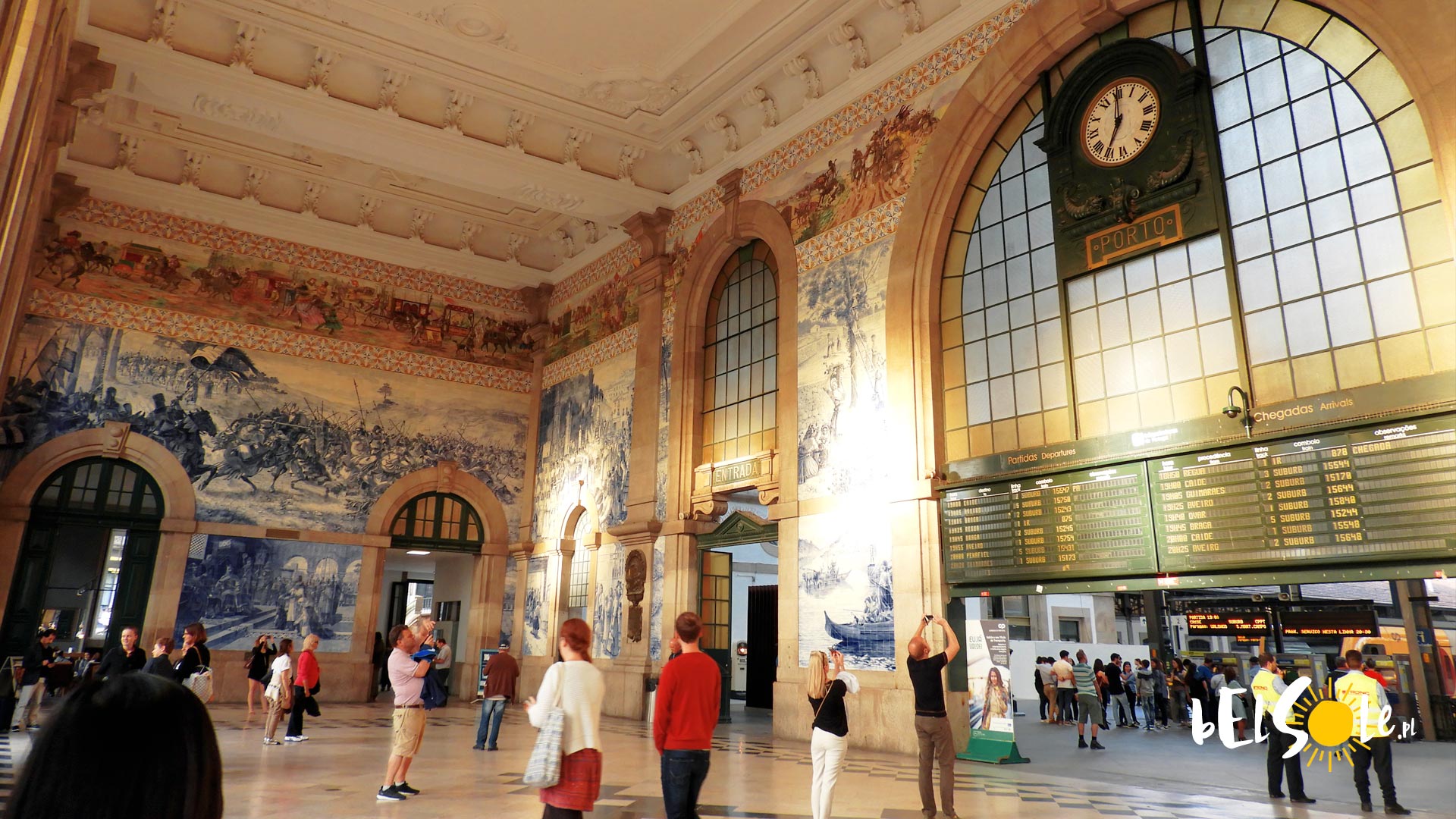One of the most characteristic artistic elements of Portugal are the azulejo tiles. There are various beautiful examples in Porto, on tenements and various monuments. Where to see the best azulejos in Porto? Here’s our list.
Sao Bento Station
One of the places most famous for the azulejo tiles is the Sao Bento railway station. The entire interior of the building, put into service in 1916, is filled with beautiful azulejos presenting the rich history of the country. The mosaics were created by Jorge Colaco. In total, the walls are covered with 20 thousand painted tiles, which take up 550 m2. You can see scenes from the Battle of Valdevez, the meeting of Egas Moniz with Alfonso VII or the arrival of John I of Portugal in Porto.
The Carmo Church – Igreja do Carmo
The walls of one of the most beautiful churches in Porto are also adorned by a pattern presented on azulejo tiles. The baroque-rococo church’s construction is decorated with the pattern from 1910, prepared by Silvestre Silvestri and Carlos Branco. The main theme of the pattern is the establishment of the Carmelite order.
Porto Cathedral (Sé Catedral)
We’ll not witness the beautiful mosaic inside the cathedral, instead there are the beautiful white-blue tiles on the cloister and the cathedral’s terrace. It’s inspired by one of the books from the Old Testament – the Song of Songs. There are also scenes from Ovid’s Metamorphoses and from the life of Virgin Mary.
Igreja da Misericórdia Church
The azulejos in the Igreja de Misericordia church are not as popular as the rest of the list for one simple reason – they’re actually inside the building. Outside the mass hours, entering the building requires a ticket to the Museu da Misericordia museum, located right next to the church. Inside, there’s the mosaic, the oldest parts of which date back to 1628. Unfortunately, most of the tiles got destroyed over the years. The new ones were placed in 1866.
Chapel of Souls – Capela das Almas
The Chapel of Souls comes from, supposedly, the 18th century. The building is most well known for its stained glass and, most importantly, the beautiful mosaic covering the entire construction. The mosaic comes from the interwar period. There are 15 947 tiles ,which all together take up 360 metres square. The pattern presents the life of St. Francis of Assisi and St. Catherine.
Church of Saint Ildefonso
The facade of the 18th century Saint Ildefonso church (at Rua de Santo Ildefonso 11), which was finished in 1739, is another excellent example of what azulejo can accomplish. The facade is decorated with 11 thousand azulejo tiles, made by Jorge Calano (in 1932). The tiles present scenes from the life of St. Ildefonso and some evangelical motifs.
Houses along the Cais da Ribeira
A nice, relaxing walk along the river or a visit to one of the bars located at Cais da Ribeira is what we’ve included on our unusual attractions list in Porto. When strolling along the Douro river bank, we should take a look at not only the Dom Luis I Bridge, but also the facades of the houses facing the river. Each tenement along the promenade is a true piece of tile art.
The ‘A Pérola do Bolhão’ grocery store
A Pérola do Bolhão is a traditional grocery store with a rich interior filled with local products, which are certainly worth bringing home from Porto, including great wines, cheeses or drinks. The store operates non-stop since 1917 and is one of the most characteristic points of the city. The shop is unique (and famous), not thanks to its history, but rather to the azulejo tiles which adorn the facade of the shop. The pattern is a good example of the fact, that azulejo doesn’t have to present only historical or biblical scenes. This one simply presents a pair of women holding a tea shrub and a coffee tree.
Rua de Ribeira Negra
And to finish the list off, we’ve got something a little more modern. The wall along the Rua de Ribeira Negra street is decorated with over 40 metres long and 5 metres tall mosaic from 1987. The piece was made by Julio Resende, who unfortunately passed away in 2011. The main motif of the azulejo is the Ribeira district itself.






